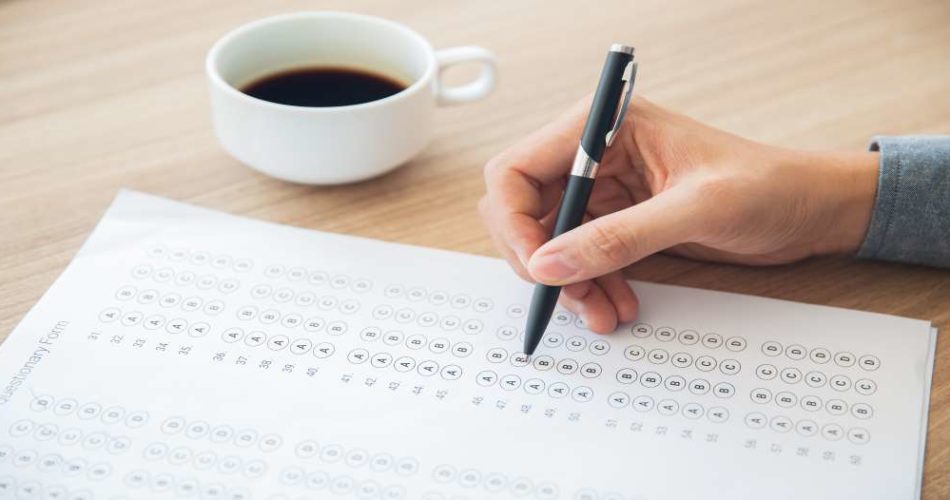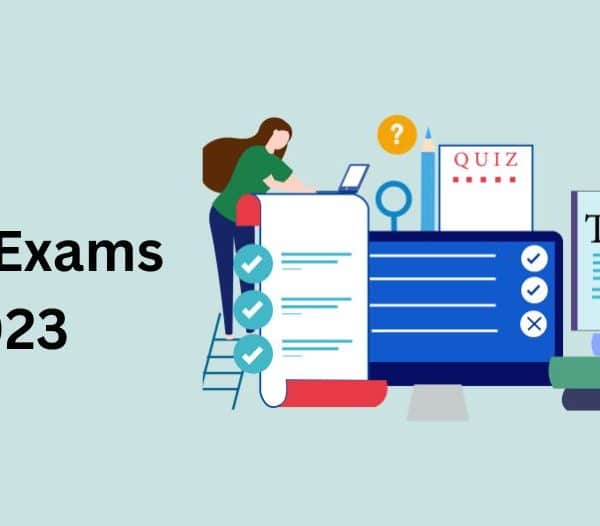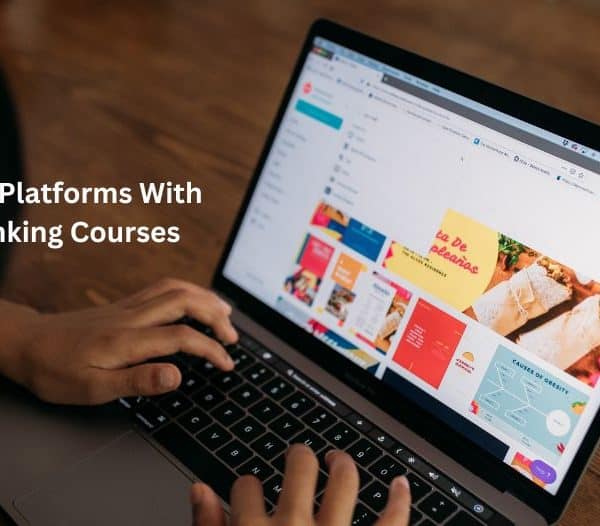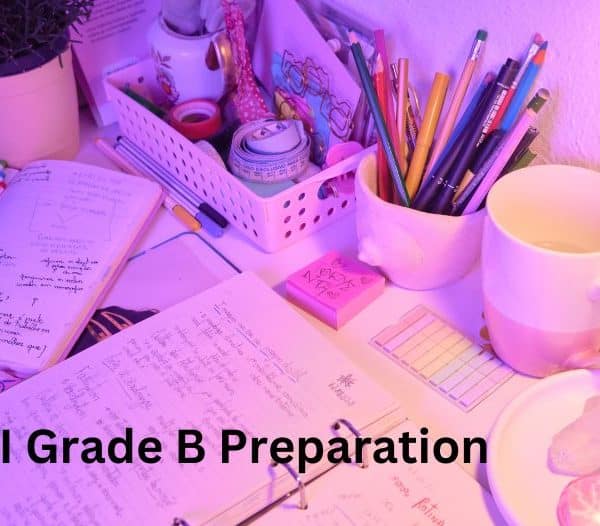Para jumbles are one of the chapters of English in the Bank PO examination. It is an important chapter as every year around 4-5 questions are directly asked from this chapter. Therefore you cannot afford to miss this one. But many candidates skip these questions as they find them hard and tricky to solve. Though the truth is far from this. If practised and understood well this one is probably the easiest type of question in the bank PO examination.
Therefore let us try to understand this chapter. In this article, you will find all about the para jumbles and practice questions to ensure your success.
What is Para Jumble?
Para jumble is a paragraph with jumbled sentences. The candidates are required to rearrange the jumbled sentences in such a way that it becomes meaningful. It is a similar jigsaw puzzle and candidates are required to solve this puzzle.
This is an important chapter as in bank exams every year around 5 to 6 questions are from this chapter. This question may appear like a tricky one but if prepared where candidates can easily solve it in very little time.
Also Read: Approximation Questions for Bank PO: Know How to Ace this Type of Question
Types of Para Jumble Questions in Bank PO
#1. In some para jumbles, opening or introductory sentences are given. The candidates are required to rearrange the rest of the sentences.
#2. In some, closing sentences are provided and the candidates are required to rearrange the rest.
#3. In both opening and closing, sentences are given. The candidate has to solve the middle sentences.
#4. Sometimes neither opening nor closing sentences are given.
Also Read: Quadratic Equation Questions for Bank PO: Practice Question and Methods to Solve
How to Solve Para jumble Questions?
Understand the Purpose of the Sentence
First of all, you should try to read the sentences and understand exactly what the writer wants to deliver. This will help you to get an idea of how the sentences should be arranged.
Identify Opening and Concluding Sentences
If the introductory, concluding, or both are given, then solving the rest of the sentence is pretty easy. But if not then get prepared for facing the challenge head-on.
Generally, the opening sentence introduces the reader to the central object. It could be anything like a person, place, thing, animal, etc.
The concluding sentences start with, therefore, thus, hence, etc. This sentence tries to wrap up the whole paragraph by stating advice, recommendation, suggestion, summary, etc.
Read the Sentence
After identifying the opening of all concluding sentences, read the whole paragraph by doing some changes. Read until everything seems logical and meaningful to you. If not they rearrange it again and read. You should replace the process till you find the paragraph meaningful and satisfying.
While reading the sentences you can look for different clues to find the correct piece to fit in your puzzle.
Transition Words
Transaction words are the words that are used to connect two different sentences. While serving para jumbles questions if you observe these words you can get an idea of what will be the next sentence.
Here are some commonly used transition words:
| above all | earlier | in time | similarly |
| after all | first of all | instead | simultaneously |
| afterwards | for example | later | soon |
| again | for instance | later on | still |
| all in all to sum up. | for now | likewise | subsequently |
| also | for one thing | likewise | the meantime |
| as a rule | for the time being | meanwhile | then |
| as well as | furthermore | moreover | therefore |
| aside from | generally | nevertheless | thus |
| at the same time | hence | next | to begin with |
| barring | however | on one hand | while |
| besides | in addition | on the other hand | with this in mind |
| besides | in conclusion | otherwise | yet |
| but | in other words | rather | |
| consequently | in short | similarly |
Activities
Sometimes a paragraph explains an activity. You can solve such questions by determining the order of the activity.
Pronoun
Pronouns such as he/she/his/her are placed in the preceding sentences when a person, place, animal or thing is introduced.
Adjective
Sometimes adjectives can also help you to identify the correct order of the sentence.
Re-read the Sentences
After solving the paragraph, read it again. This will help you to minimise any possibility of mistakes. Try to use your logic to identify the odd one out.
Also Read: Inequality Questions for Bank PO: Let’s Check Out the Practice Questions to Elevate Learning
Para jumbles Questions for Bank PO
IBPS PO 2020
Directions (1-4): In each of the questions given below a sentence is given with three words in bold. Choose the option which gives the correct sequence of these words to make the sentence grammatically and contextually correct.
Q1. The role played by human rights organizations in documenting (A) and questioning state component (B) and excesses is a necessary functioning(C) of civil society activism
(a) BAC
(b) None of these
(c) CAB
(d) BCA
(e) ACB
Q2. The C&AG’s observations in its divisible (A) audit report relating to the denial of States’ financial (B) in the share(C) taxes pool.
(a) CBA
(b) BAC
(c) ACB
(d) None of these
(e) BCA
Q3. Many countries have chosen to ignore the connection between biodiversity and well-being, and pursue (A) ecological capital in prosperity (B) of financial depletion (C).
(a) None of these
(b) CAB
(c) ABC
(d) BCA
(e) CBA
Q4. Gandhi’s repeated thought (A) on service to all human beings from all traditions of emphasis (B) was the essence (C) of his nonviolent democratic theory.
(a) ABC
(b) ACB
(c) CAB
(d) BAC
(e) None of these
IBPS PO 2017
Direction (5-14): Below in each question, some sentences are given, find the sentence which is not really contributing to the main theme and the of the passage or find the odd sentence out and rearrange the remaining sentences to make a coherent paragraph. If the given sentence is correct as it is then choose option (e). If the sequence is the one that is not given then choose option (d) as your choice.
Q5. (A) keep their inner life (B)/ Tightly under control (C)/ Educational institutions seldom serve as precise mirrors (D)/Of historical change because pedagogic and administrative rituals (E)/ That have nicely preserved an empty shell of a special inherited identity
(a) CEDB
(b) CDEB
(c) CDAB
(d) None of these
(e) No correction required
Q6. (A)Most importantly the labour market’(B)/We can expect to see continued spillovers (C)/Into other areas of the economy, (D)/Combined with a ‘broader unravelling of credit markets, (E)Parliament should act quickly to keep the economy from stalling
(a) DECA
(b) DEAC
(c) ECBD
(d) None of these
(e) No correction required
Q7. (A) And act judiciously to bring the economy back on track(B)/The start-up ecosystem cannot progress in a disturbing business cycle(C)/The economy appears to be in a shambles(D)/ Leaders in the government are failing to recognize the pessimism(E)/ And despite the gloomy forecasts for the future,
(a) DAEB
(b) BEDA
(c) CEDA
(d) None of these
(e) No correction required
Q8. (A)Even at the risk of reducing an appraisal(B)/ It strove to make this evident, (C)/Of a great writer such as Ishiguro to a trite high school essay (D)/While announcing the name, (E)/ That came its way last year
(a) DBAC
(b) ACNE
(c) DCBE
(d) None of these
(e) No correction required
Q9. (A) But laws do have the utility value (B) To heed the line between religious traditions and superstitious practices (C) Of curbing the prevalence of inhuman rituals and practices (D) To eradicate superstition from society,(E) Mere legislation is not enough
(a) EBAC
(b) DEBA
(c) EDAC
(d) None of these
(e) No correction required
Q10. (A) As the LTTE displaced the other Tamil militias and became dominant, (B) To its ambition of a separate state (C)The abuses perpetrated by the warring actors (D) They boldly challenged its political choices, (E) Which, they felt, subordinated the well-being of the Tamil people
(a) CEDB
(b) DABE
(c) ADEB
(d) None of these
(e) No correction required
Q11. (A)Are expected to bring their regional expertise(B)/ Are in the exclusive domain of the Union government, (C)/ The successful outcome of a request made by the Kerala Chief Minister (D)/ Has been widely applauded(E)/Although traditionalists may argue that foreign affairs
(a) EBCD
(b) CDEA
(c) EACD
(d) None of these
(e) No correction required
Q12. (A) It is this crucial human health angle (B)/ That has spawned a mushrooming body of science-centred (C)/ On understanding the linkages between sleep and normal metabolic activity, (D)/ And the potentially deleterious effect of sleep deprivation (E)/ That helped complete the jigsaw puzzle
(a) CABD
(b) ABCE
(c) AEBC
(d) None of these
(e) No correction required
Q13. (A) Has to give way to (B)/ Avert accidents (C)/ At the cost of maintenance and safety (D)/ The present system of running trains on a congested network (E)/ Safety consciousness in operations
(a) DCAE
(b) EABC
(c) DCAB
(d) None of these
(e) No correction required
Q14. (A) It is increasingly manifested in their converging interests (B)/To invest in greater coordination security cooperation (C)/ to ensure Eurasian connectivity plans (D) that are truly multilateral, (E) and also financially and environmentally sustainable.
(a) ACDE
(b) ADCE
(c) BACE
(d) None of these
(e) No correction required
IBPS PO 2016
Directions (15-19): Rearrange the following six sentences (A), (B), (C), (D), (E) and (F) in the proper sequence to form a meaningful paragraph and then answer the questions given below.
A–It is the only country in the world that is carbon negative, which means it produces more oxygen than it consumes.
B–Bhutan, sandwiched between the two most populous nations on Earth, suffers for their sins.
C–So far, so good. But then, two things happened.
D–Carbon sinks, 70% forest cover, powered almost entirely by mountain streams—Bhutan is a poster child for green living.
E– Glaciers are beginning to melt, flash floods and heavy rains—and even droughts—are common, and temperatures are climbing.
F– One, India and China got richer.
Q15. Which of the following should be the first sentence of the given paragraph?
(a)E
(b)D
(c)C
(d)B
(e)A
Q16. Which of the following should be the Third sentence of the given paragraph?
(a)A
(b)B
(c)C
(d)D
(e)E
Q17. Which of the following should be the LAST sentence of the given paragraph?
(a)A
(b)C
(c)B
(d)D
(e)E
Q18. Which of the following should be the Fourth sentence of the given paragraph?
(a)F
(b)C
(c)B
(d)E
(e)D
Q19. Which of the following should be the Second sentence of the given paragraph?
(a)B
(b)D
(c)A
(d)C
(e)E
SBI PO 2017
Directions (20-25): Given below the sentences each of which has been divided into five parts out of which the first part has been marked bold. Each of the questions is then followed by the five options which give the sequence of the rearranged parts. You must choose the option which gives the correct sequence of the parts. If the sentence is already arranged or the correct sequence doesn’t match any of the given sequences, mark (e) .i.e. “None of the above” as your answer.
Q20. The apex court had ordered that the/ of the biometric scheme and the enabling law(A)deadline be extended till the five-judge constitution(B)/ on petitions challenging the validity(C)/ bench delivers its judgment(D)
(a) ACDB
(b) BCAD
(c) BDCA
(d) CADB
(e) None of the above
Q21. Repealing the law that safeguards/ the floodgates of poaching(A)/ and it would lead to(B)/ marginalisation of the indigenous people(C)/the indigenous people would open(D)
(a) DCBA
(b) DABC
(c) ACBD
(d) BACD
(e) None of the above
Q22. My thoughts are with the families/ in this unfortunate accident(A)/ recovery of the injured(B)/ of those who have lost their loved ones(C)/ I pray for the speedy(D)/
(a) BCAD
(b) DACB
(c) ACBD
(d) CADB
(e) None of the above
Q23. Several people became leaders/ remained where they were(A)/ and Ministers after that(B)/ rally but the people(C)/ belonging to the community(D)
(a) ABCD
(b) BCDA
(c) CABD
(d) DACB
(e) None of the above
Q24. He also directed the department/ to develop the new schools as a model(A)/ completion of construction work(B)/ construction technology for early(C)/ institutions and engage modern(D)
(a) ADCB
(b) ABCD
(c) DACB
(d) CADB
(e) None of the above
Q25. The U.S. is a/ to its being an open society(A)/ nation of immigrants(B)/ in the present global order(C)/ and owes its predominant position(D).
(a) ADCB
(b) ABCD
(c) BDCA
(d) CADB
(e) None of the above
Also Read: Blood Relation Questions for Bank PO: Questions That Appears Frequently In The Bank PO Exam
Conclusion
I hope this article helped you to understand the para jumbles well. For more such articles and Bank PO questions for practice visit UPSC Pathshala. This website is the best website for your bank PO preparation. Why? As it offers a specially designed online bank PO course “Mission Bank PO” for the students. From high-quality video lectures, online bank PO classes, mock tests and many more. There is no aspect that this course does not cover.
Click for more information.
Also Read: Coding-Decoding Questions for Bank PO: Types of Coding and Decoding Questions and How to Solve Them
[epcl_custom_ads id=”2″







I used to find these type of questions very difficult and challenging. But now I can solve them easily.
This article is extremely wonderful for my preparation.
Thank you for this amazing article. Do you guys have any queries?